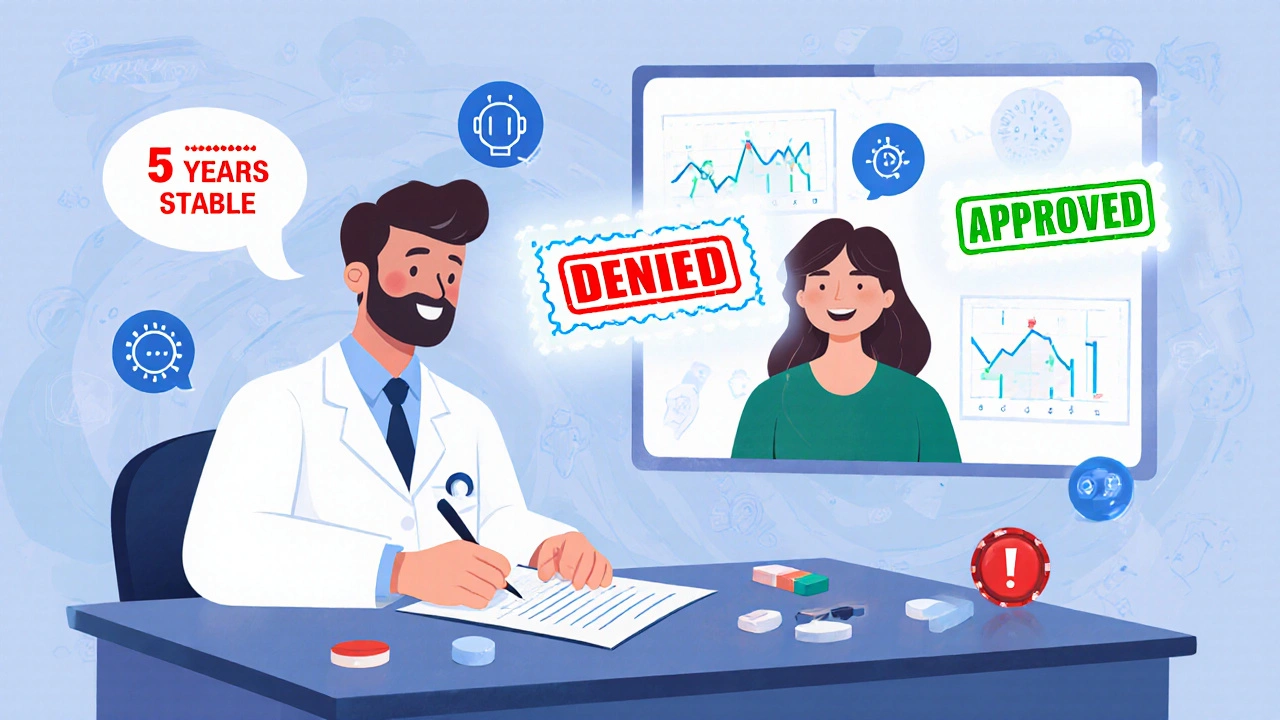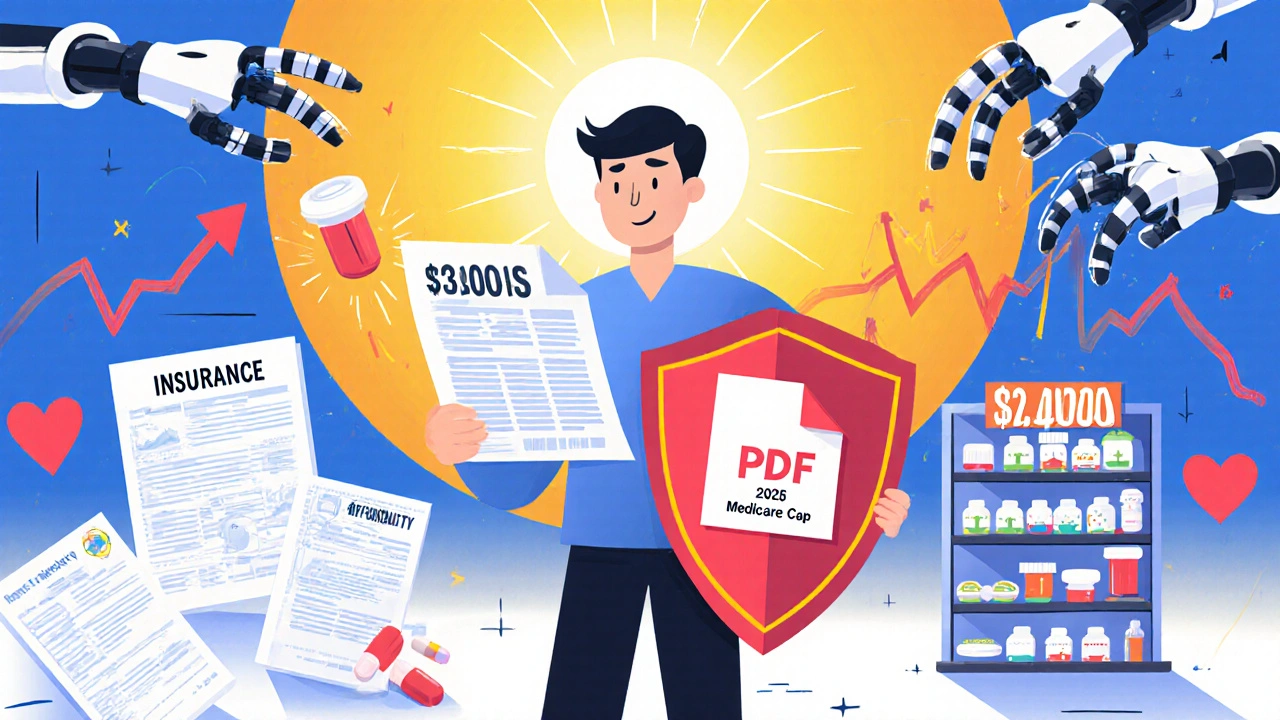When your insurance changes the list of covered drugs, it’s not just a paperwork update-it can mean your monthly pill cost jumps from $20 to $400 overnight. You’re not alone. In 2023, 12.7% of Medicare beneficiaries had a medication removed from their plan’s formulary, and nearly one in three struggled to get a replacement without a delay or big price hike. Formularies aren’t secret codes or bureaucratic traps-they’re practical tools designed to save money, but only if you know how to use them. This guide shows you exactly how to check, challenge, and adapt to formulary changes without risking your health.
What Exactly Is a Formulary?
A formulary is the official list of prescription drugs your insurance will pay for. It’s not random. Every drug on the list has been reviewed by a team of doctors and pharmacists who decide what’s safe, effective, and cost-efficient. These teams, called Pharmacy and Therapeutics (P&T) committees, don’t pick drugs based on brand names or marketing-they look at real-world outcomes. If two drugs treat high blood pressure equally well but one costs $10 and the other $150, the cheaper one goes on Tier 1. The expensive one? It might be on Tier 4-or not covered at all. Most plans use a tiered system:- Tier 1: Generic drugs. Usually $0-$10 copay.
- Tier 2: Preferred brand-name drugs. $25-$50.
- Tier 3: Non-preferred brand-name drugs. $50-$100.
- Tier 4/5: Specialty drugs. $100+, or you pay a percentage of the total cost.
Why Do Formularies Change?
Formularies aren’t set in stone. They change for three main reasons:- New drugs hit the market-like a cheaper version of your current medication. Your plan might swap it in.
- Drug prices spike-if a brand-name drug jumps 30% in cost, the insurer may move it to a higher tier or drop it entirely.
- Safety concerns arise-if the FDA flags a drug for side effects, it can be pulled from coverage fast.
How to Find Your Current Formulary (And Why Most People Fail)
Here’s the truth: 68% of people can’t find their plan’s formulary on their insurer’s website. Why? Because insurers hide it. Look for terms like:- “Drug List”
- “Formulary”
- “Prescription Benefits”
- “Plan Materials”

What to Do If Your Drug Is Removed or Moved
If your medication disappears from the formulary or jumps to a higher tier, you have options:- Ask your doctor for a therapeutic alternative-a different drug that treats the same condition. Often, it’s just a matter of switching from one statin to another. Your doctor knows what works.
- Request a formulary exception-this is your legal right. Your doctor submits a letter explaining why the alternative won’t work. Common reasons: you tried the alternative and had side effects, or you’ve been stable on your current drug for over a year.
- Appeal if denied-if your exception is denied, you can appeal. Medicare gives you 60 days to file. Commercial plans vary, but most allow 30 days.
- “Patient experienced severe nausea with all Tier 2 alternatives.”
- “Patient has been on this medication for 5 years with no complications.”
- “Alternative drug has documented interaction with Patient’s other medications.”
When Exceptions Don’t Work: Real Stories
Not every story ends well. In 2023, a 72-year-old cancer patient in Ohio lost access to her specialty drug for 21 days after it was removed from the formulary. No notice. No backup. She had to pause treatment. Her tumor grew. She’s still fighting. On the other side, a Florida retiree had his heart medication moved from Tier 2 to Tier 4-cost jumped from $45 to $450. He called his plan, submitted his doctor’s letter, and got approved in 48 hours. Why? Because his doctor documented that two alternatives caused dangerous drops in his blood pressure. The difference? Preparation. The retiree had already checked his formulary during Open Enrollment. He knew his drug was at risk. He acted before the change hit.How to Protect Yourself Before Changes Happen
Don’t wait for a letter. Be proactive:- Check your formulary every October-during Medicare’s Open Enrollment Period (Oct 15-Dec 7). This is your last chance to switch plans before January 1 changes kick in.
- Set calendar reminders for your prescription refill dates. If your refill date is January 2, and your plan changes on January 1, you’re at risk.
- Ask your pharmacist-they see formulary changes daily. They know which drugs are being dropped or moved.
- Use drug cost apps like GoodRx or SingleCare. They show real-time prices at nearby pharmacies, even for non-covered drugs.

The Big Picture: Why Formularies Are Here to Stay
Formularies aren’t going away. They save the system billions. In 2022, they cut prescription spending by 22-34%. The Inflation Reduction Act capped insulin at $35/month-so 94% of Medicare plans removed insulin cost-sharing entirely. That’s a win. But there’s a cost. The Congressional Budget Office found that each extra formulary restriction lowers medication adherence by 5.2%. That means more hospital visits, more ER trips, more long-term damage. The goal isn’t to eliminate formularies. It’s to use them wisely. Smart patients don’t fight the system-they learn its rules. They know how to ask for exceptions. They check their formulary before every refill. They don’t assume anything.What’s Changing in 2025
Starting January 1, 2025, Medicare Part D will cap out-of-pocket drug costs at $2,000 per year. That’s huge. It means fewer people will be forced to skip doses because they can’t afford them. But it also means insurers may tighten formulary restrictions earlier to offset the loss. Also, 37% of pharmacy benefit managers (PBMs) now use AI to decide which drugs to include. That means faster, more data-driven decisions-but less human oversight. You’ll need to be even more vigilant.Final Checklist: Your Formulary Safety Plan
Use this every October and every time you get a new prescription:- ✅ Find your plan’s current formulary (PDF version).
- ✅ Search for every drug you take-name and dosage.
- ✅ Note the tier and copay for each.
- ✅ Identify any drugs marked “prior authorization required” or “step therapy.”
- ✅ Talk to your doctor: “If this drug gets removed, what’s the next best option?”
- ✅ Save your doctor’s contact info and prescription history.
- ✅ Set a calendar alert: “Check formulary” every 6 months.
What if my insurance drops my medication without warning?
If your drug is removed without notice, contact your insurer immediately. Ask for a “retroactive exception” for your current prescription. Most plans will cover your refill for 30-90 days while you work on a long-term solution. Your doctor can also file an emergency exception request. Don’t stop taking your medication-keep taking it until you have a replacement approved.
Can I switch plans mid-year if my drug is removed?
Generally, no. Medicare and commercial plans only allow plan changes during Open Enrollment (October-December) or during a Special Enrollment Period. Special exceptions exist if you move, lose other coverage, or qualify for Extra Help. If your drug is removed, your best move is to file a formulary exception-not switch plans.
Do generic drugs work as well as brand names?
Yes, for the vast majority of medications. The FDA requires generics to have the same active ingredient, strength, dosage form, and route of administration as the brand-name drug. They must also meet the same strict quality standards. Differences in fillers or coatings rarely affect effectiveness. If your doctor says a generic won’t work, ask for proof-like a documented adverse reaction. Most of the time, generics are just as safe and effective.
Why do some drugs need prior authorization?
Prior authorization means your insurer wants proof that you’ve tried cheaper alternatives first or that the drug is medically necessary. It’s a cost-control step. Common for specialty drugs, opioids, or high-cost brand names. Your doctor submits lab results, treatment history, or a letter explaining why alternatives failed. Approval rates are high-around 78%-when the request is detailed and evidence-based.
Is there help if I can’t afford my medication after a formulary change?
Yes. Many drug manufacturers offer patient assistance programs with free or low-cost medications. Nonprofits like NeedyMeds and the Patient Access Network Foundation help with copay assistance. If you’re on Medicare, check if you qualify for Extra Help-a federal program that lowers premiums and copays. Your pharmacist can guide you to these resources.



Just found out my insulin got moved to tier 4 last month. I didn't notice until my refill got denied. Took me three weeks to get the exception approved. My doctor had to write a whole letter. Why do they make this so hard? I'm not asking for luxury, just the medicine that keeps me alive.
Oh please. This is why America's healthcare is broken. You people act like it's a miracle that you're not getting gouged. In Canada, we just get the drug. No forms. No appeals. No 'tier systems.' If it's FDA-approved, it's covered. Stop acting like you're fighting a war when you're just getting the bare minimum you're owed.
I think what's really interesting here is how formularies reflect a deeper tension: efficiency versus humanity. The P&T committees aren't evil-they're trying to balance cost and outcomes. But when a 72-year-old has to pause cancer treatment because of a spreadsheet decision, we've lost the point. Medicine isn't a supply chain. It's a lifeline. And if our systems can't see that, we're not fixing healthcare-we're just automating cruelty.
Thank you for this. I shared it with my mom who's on Medicare and she finally understands why she needs to check her formulary every October. She used to just trust the pharmacy. Now she prints the PDF, highlights her meds, and brings it to every doctor visit. Small habits save lives.
Same here in India. We don't have insurance like this but we face similar issues with drug pricing and availability. The real issue is transparency. If you know what's coming, you can plan. No one should be blindsided by a $400 pill bill. Keep sharing this info. It matters.
You guys are all missing the real problem. It's not the formulary-it's your doctors. They don't push back enough. My cardiologist just shrugged when my drug got pulled. I had to research alternatives myself and bring him a list. He signed off without even looking at the studies. If you're not fighting for yourself, no one will.
Oh my GOD. I just got kicked off my antidepressant because it's now 'non-preferred.' I'm not exaggerating-I cried in the pharmacy. I've been stable for 8 years. Now I'm back to the 'try this junk first' nonsense. And the worst part? The new drug gave me tremors and made me feel like I was trapped in a haunted house. This isn't healthcare. This is financial torture disguised as policy.
You got this. Seriously. I was in your shoes last year. Took me 6 weeks but I got my exception approved. Your doctor is your ally-don't be afraid to push. Print this guide. Tape it to your fridge. You're not alone. And you deserve to stay healthy.
LMAO. So we're supposed to be grateful because 78% of exceptions get approved? That means 1 in 4 people get denied and possibly die. And you call this a 'guide'? This is a survival manual for people who've been gutted by capitalism. Congrats, you've turned healthcare into a rigged game. Now go hug a PBM executive.
While the procedural guidance provided herein is both comprehensive and commendable, it is imperative to recognize that systemic reform remains an urgent imperative. The burden of navigating formularies ought not rest upon the individual patient. Institutional accountability, legislative oversight, and standardized transparency protocols are prerequisites for ethical pharmaceutical access.
I used to think formularies were just boring insurance stuff. Then my dad had to switch meds after his heart attack. He was terrified. I sat with him for hours reading the PDFs, calling the pharmacy, writing down every side effect. We found a generic that worked. He’s fine now. But I’ll never forget how alone we felt. This guide? It’s the thing we wish we’d had.